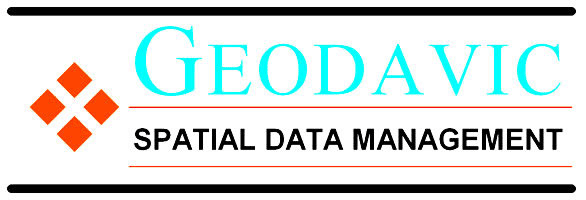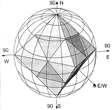Spatial Information Management

All Things Spatial...
What is so special about spatial? The short answer is nothing much, once you get beyond the geometry and mathematics involved. For thousands of years the human race has had to deal with both in order to navigate across vast oceans and tracts of land, or in order to build large structures, such as the Great Pyramids. It has only been since the time of Hipparchus and Euclid that we have begun to understand the mathematics of our space. Even today we deal with location which implies a knowledge of where relative to other places on the surface of the Earth, and somehow do it without using either mathematics or geometry. With the advent of computers emerged computer-aided design and through the development of computational geometry in two-dimensions came geospatial information systems.
At first these systems were closed black-boxes very much in the back-rooms and not in the mainstream of Information Technology. Then, through work on indexing techniques for large amounts of spatial data and extensions to commercial database engines, such as ESRI's Spatial Data Engine (SDE), the GIS became less of a black-box and more integrated with main-stream IT. Today all of the major database vendors offer extensions to their database engines in support of vector geometry, and in one case raster, and also have a standard set of operators that operate on that data.
Spatial concepts have also emerged on the World-Wide-Web with on-line mapping, routing and simple local search. The next generation of these will enable searching using keyword and spatial concepts, such as near-by or within 2 miles of some place as well as three-dimensional fly-throughs of practically any location. All of these will require better data and the inclusion of raster data in data management systems capable of handling very large data sets, which implies more research is required on such things as indexing of spatial data in two or more dimensions.
All Things Maps...
A map is a graphic representation or scale model of spatial concepts. It is a means for conveying geographic information. Maps are a universal medium for communication, easily understood and appreciated by most people, regardless of language or culture. One of the earliest maps of the known world was done by Claudius Ptolemaeus (Ptolemy) in about AD150.
We have come a long way since those early days and now maps are served up over the web from companies such as Google, Microsoft and MapQuest. There is also the ability for anyone with a web-server and some technical savvy to put up their own map server using open-source software such as GeoServer, MapServer and MapGuide.
Here is a map of Canada built using MapLibre.
My Place...
Okay, so with spatial data and a mechanism to present that data (maps) we should be able to discover things that are relevant to a person at the place they find themselves or are wanting to travel to? Well, not really, or at least not very well. There is still no substitute for a good travel guide in the form of a book and paper maps despite the hype around "local search" on the web. Early examples of such things are Yahoo's GeoPlanet (now discontinued) and LocalSearch. If you look closely you will see that most local search is nothing more than on-line business directories that have had their entries geocoded and suitable indexes built for both keyword and nearest neighbor type searching to occur, see 411.ca as an example. Another example is seen here where you can lookup an address using just the postal code!
Placesmart Solutions...
Placesmart Solutions is about providing solutions to the problem of indexing, querying and visualizing information where the user is interested in finding information pertinent to a particular place or region. Placesmart Solutions leverages the following open source technologies...
OpenLayers is an open source JavaScript library for displaying map data in web browsers as slippy maps. It provides an API for building rich web-based geographic applications similar to Google Maps and Bing Maps. This library allows developers without a GIS background to very easily display tiled web maps hosted on a public server, with optional tiled overlays. It can load feature data from GeoJSON files, style it and create interactive layers, such as markers with popups when clicked.
D3.js (or just D3 for Data-Driven Documents) is a JavaScript library for producing dynamic, interactive data visualizations in web browsers. It makes use of the widely implemented SVG, HTML5, and CSS standards. In contrast to many other libraries, D3.js allows great control over the final visual result. D3.js is used on hundreds of thousands of websites. Some popular uses include creating interactive graphics for online news websites, information dashboards for viewing data, and producing maps from GIS map making data. In addition, the exportable nature of SVG enables graphics created by D3 to be used in print publications.
PostgreSQL is a powerful, open source object-relational database system with over 30 years of active development that has earned it a strong reputation for reliability, feature robustness, and performance.
Solr (pronounced "solar") is an open source enterprise search platform, written in Java, from the Apache Lucene project. Its major features include full-text search, hit highlighting, faceted search, real-time indexing, dynamic clustering, database integration, NoSQL features[1] and rich document (e.g., Word, PDF) handling. Solr also has geo-spatial search, including multiple points per documents and polygons. Providing distributed search and index replication, Solr is designed for scalability and fault tolerance. Solr is widely used for enterprise search and analytics use cases and has an active development community and regular releases.
PostGIS is an open source software program that adds support for geographic objects to the PostgreSQL object-relational database. PostGIS follows the Simple Features for SQL specification from the Open Geospatial Consortium (OGC).
Sails.js (or Sails) is a Model-View-Controller (MVC) web application framework developed atop the Node.js environment, released as free and open-source software under the MIT License. It is designed to make it easy to build custom, enterprise-grade Node.js web applications and APIs, and enables applications to be built with 100% JavaScript. This not only includes models, views, and controllers; but also configuration files and adapters (e.g., PostgreSQL or MongoDB database connectors).
GeoServer is an open source server for sharing geospatial data. Designed for interoperability, it publishes data from any major spatial data source using open standards. GeoServer is a OGC compliant implementation of a number of open standards such as Web Feature Service (WFS), Web Map Service (WMS), and Web Coverage Service (WCS). Additional formats and publication options are available including Web Map Tile Service (WMTS) and extensions for Catalogue Service (CSW) and Web Processing Service (WPS).
Geographic Information Retrieval (GIR)...
GIR is an applied research area that combines aspects of DBMS research, User Interface research, GIS research, and Information Retrieval research, ... concerned with indexing, searching, retrieving and browsing of geo-referenced information sources, and the design of systems to accomplish these tasks effectively and efficiently. The major areas of research are:
- Detecting geographic references (toponyms)
- Disambiguating place names
- Vague geographic terminology
- Spatial and textual indexing
- Geographical relevance/ranking
- User interface requirements for GIR


